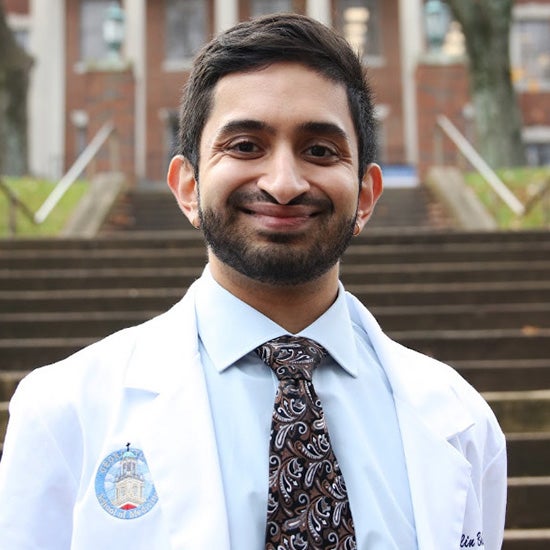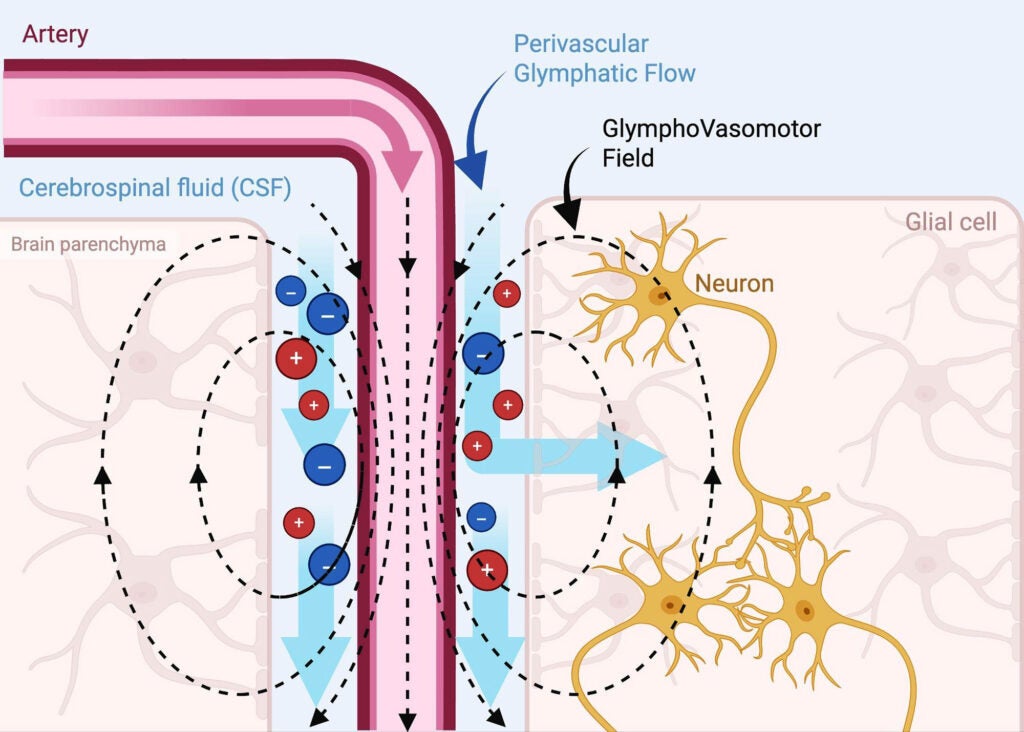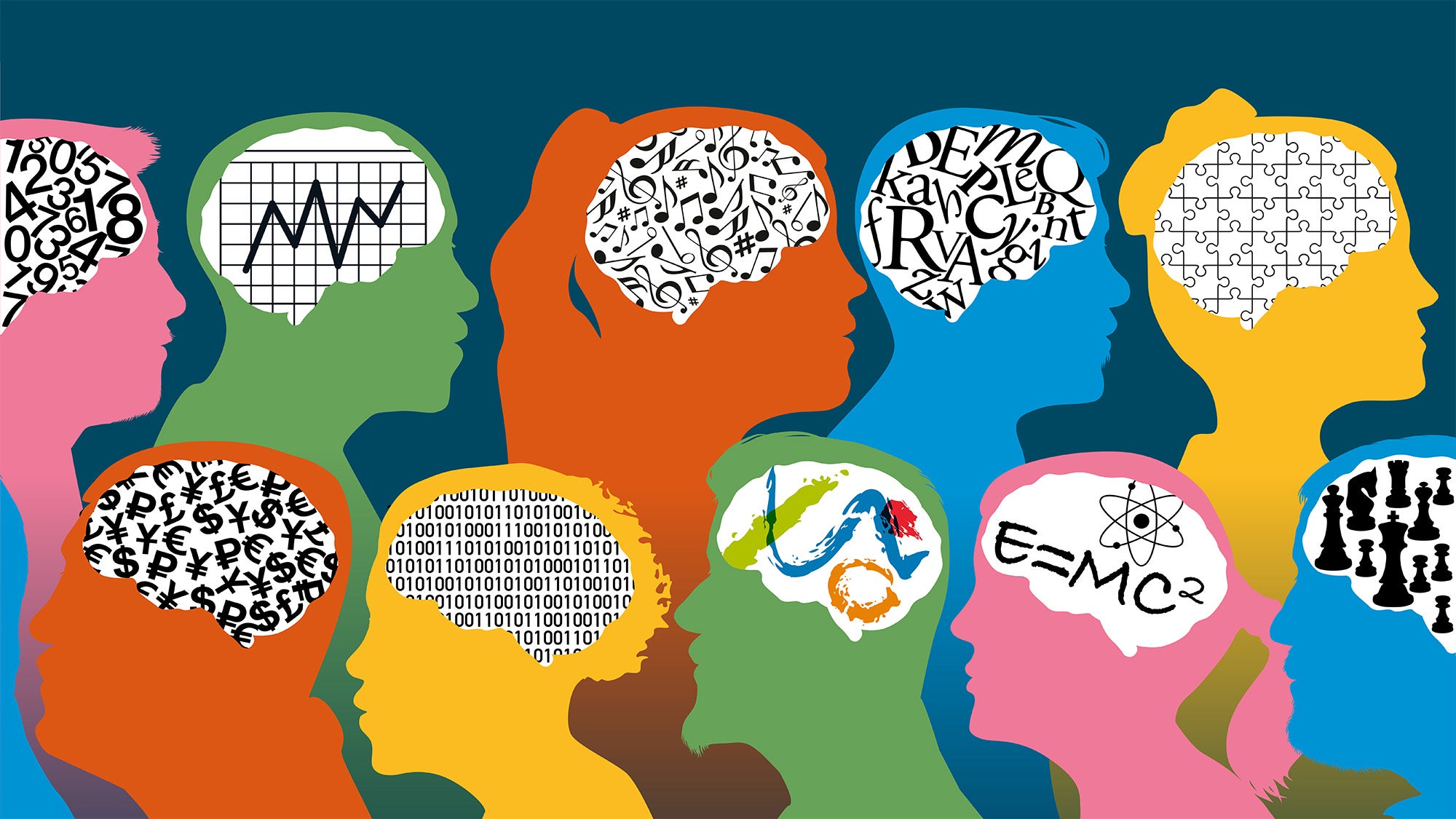Exploring the Symphony of the Human Mind
Georgetown Medical Student Posits New Theory of Consciousness
(October 8, 2025) — What is consciousness?
In the simplest terms, consciousness is our individual awareness of thoughts, feelings, memories and sensations. What happens when we look at a painting, or decide how to prioritize the activities for our day? Or recognize the people we know?
But, there is nothing simple about consciousness. Scientists, as well as philosophers, have long debated what consciousness means and what happens in our brains to produce consciousness. Despite this debate and progress in brain science, there’s no widely accepted definition or explanation — answers remain elusive and highly controversial.
Shalin Bhatt (M’28), a second-year Georgetown medical student, says he couldn’t stop thinking about the question, leading him to develop a theory that was recently published in the October edition of Medical Hypotheses, a journal specializing in giving new ideas consideration. (GlymphoVasomotor Field (GVF) Theory: A Non-neuronal Scaffolding for Brain Rhythms and Consciousness.)

Shalin Bhatt (M’28)
During his time as a teaching assistant in the cadaver lab for first-year students, Bhatt began looking for neuroimmunological connections between the body’s lymphatic drainage and the brain. He was particularly interested in the flow of the glymphatic fluid, which drains waste products and influences immune cell surveillance in the brain.
“I thought about this all the time, and one day I had this light bulb moment,” he says. “For decades, research has focused on two leading neuronal theories to explain consciousness, but neither one fully explains how the brain’s intrinsic oscillations give rise to the coherent synchrony of sights, sounds, thoughts and emotions — our lived awareness.”
With help from classmates Nesreen Shahrour (M’27), Omar Sbaih (CAS’26), Sydney Habermann (M’27) and Ethan Weatherdon (M’27), Bhatt’s exploration led to a potentially important new theory that he named the GlymphoVasoMotor Field theory.
“It offers an innovative framework for integrating brain activities to explain consciousness,” he says.
The two leading theories, known as Integrated Information Theory and Global Neuronal Workspace Theory, both posit consciousness as arising from brain activity, but differ in terms of the mechanisms and locations in the brain that are involved in these functions. Recent research that looks at how the brain responds when undergoing certain activities has supported both theories in part, but have also revealed gaps and weaknesses in each, Bhatt says.
Bhatt’s concept focuses on the role that cerebrospinal fluid (CSF) plays in the complex brain activity that produces consciousness.

An illustration of Bhatt’s concept. (Created in BioRender.com)
CSF is a clear, colorless fluid that flows through the spaces around the blood vessels in the brain. It serves as a protection for brain tissue, delivers nutrients, carries away waste products and is an integral component of the glymphatic system.
“The glymphatic system is not simply a drainage system,” he says. “There are ions in the fluid, and as the ions move and accelerate, they generate an electromagnetic field. That energy has the potential for creating a non-neuronal field that may be essential for generating consciousness. It’s the scaffolding that supports coordinated neuronal activity.”
Another way of looking at this, Bhatt suggests, is to think of your brain as an orchestra.
“The neurons are the instruments, each with its own distinct sound. On their own, they can play out of sync, scattered, even harsh. In what we are proposing, the conductor is the pulsatile, ion-charged cerebrospinal flow of glymphatic drainage. That flow generates delicate electromagnetic fields. It’s like the conductor signaling to the musicians. The neurons work together. The melodies of thought, memory and perception rise not as separate fragments, but as coherent harmony. The same way that the conductor transforms sound into music, the GlymphoVasomotor Field transforms neural firing into consciousness — the symphony of the human mind.”
Carlo Tornatore, MD, professor and chair of neurology at Georgetown University School of Medicine and MedStar Georgetown University Hospital, serves as Bhatt’s mentor for this work. He acknowledges that the concept is unconfirmed and theoretical but is excited both by Bhatt’s achievement and its potential impact.
“This is a story about a medical student who thought deeply about an important, very understudied issue and came up with a novel idea which could fundamentally change how we think about consciousness,” he says. “This work not only provides key insights into a crucial question about how we experience the world, but also has significant ramifications for developing new approaches and treatments to those diseases and conditions that cause dysfunction in our consciousness.”
Those conditions include parkinsonism, dementia, stroke and schizophrenia. All of these conditions involve distorted reality, such as hallucinations, or diminished consciousness. In dementia, for example, we know the glymphatic flow is disrupted and the brain loses its ability to rid itself of harmful waste products such as amyloids and proteins, Tornatore explains.
“We also know that stroke patients get improved use of their arm when we stimulate the vagus nerve,” Tornatore adds. “Is that because their glymphatic flow is improved? We think the answer is yes. We see real possibilities across a range of medical conditions for helping patients regain critical functions they have lost by orchestrating improved glymphatic flow.”
Bhatt is taking an extra year of medical school to continue his research. He acknowledges that it took a big leap for Tornatore and other Georgetown mentors and colleagues to open themselves to his idea.
“I have been reflecting recently on how blessed I feel that the Georgetown medical-scientific community was open to listening to my ideas, to hearing me out, to challenging and ultimately encouraging me to move forward with the concept and the paper,” he says. “Wherever this leads, it could not have happened without that support. I could not be more grateful.”
Topmost Image: Pict Rider / iStock / Getty Images Plus
